When it comes to sculpting an attractive chest, fitness enthusiasts frequently focus on the upper pecs, which might result in uneven chest growth. The upper chest receives greater attention, owing to the popularity of workouts that primarily activate the upper pectoral muscles, such as bench presses and incline presses. While these workouts are unquestionably helpful for increasing upper chest power and size, they frequently leave the lower chest undeveloped, resulting in an aesthetically unbalanced look.
To create a chiseled chest that truly stands out, you must shift your focus and prioritize lower chest growth. When the lower chest is neglected, it can result in a chest that lacks the fullness and symmetry that many fitness enthusiasts seek.
As a result, it’s time to pay attention to your lower chest. The lower chest is an important part of developing a well-balanced chest and ignoring it might impede your total chest growth. Concentrating primarily on the upper chest may produce the desired “popping” look in your upper pecs, but it may leave the lower chest behind, detracting from the overall aesthetics of your chest muscles.
To correct this imbalance, use activities that especially target the lower chest in your fitness program. The decline bench press is one of the most effective workouts for developing the lower chest. By lowering the bench, you may move the attention away from the upper chest and directly work the lower pectoral muscles.
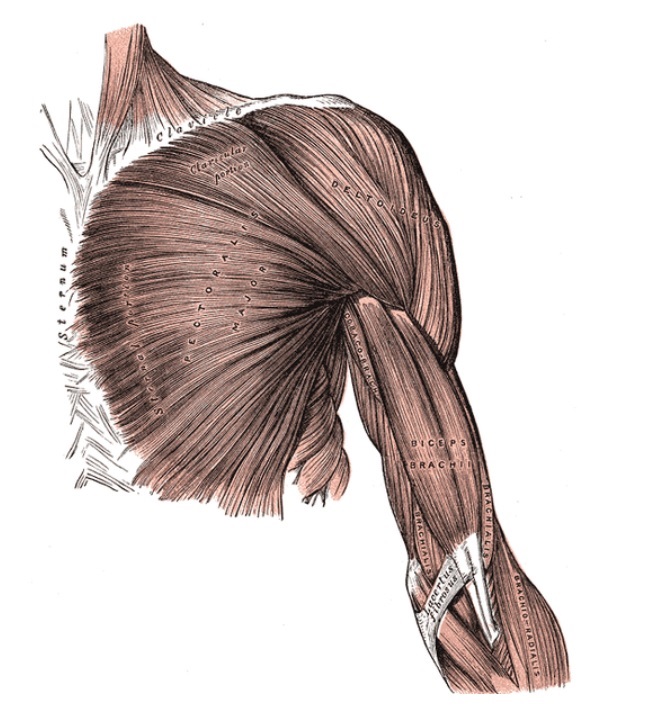
How to Target the Lower Chest
- The pectoralis major, or chest muscle, is a complex muscle separated into two principal segments: the clavicular head (upper chest) and the sternal head (lower chest).
- When we perform typical chest workouts like bench presses, incline presses, and push-ups, the emphasis is frequently placed on the upper chest.
- While these workouts are extremely efficient for building power and size in the upper pecs, they might leave the lower chest undeveloped.
- This abnormal growth can cause an aesthetic imbalance in which the upper chest seems well-defined and strong while the lower chest lacks the same amount of fullness and definition.
EMG to Assess Muscle Activity
To completely unleash the power of your chest muscles, you must go deeper, which is where the Electromyography (EMG) equipment emerges as a game-changing tool in the fitness field.
- The EMG gadget works by measuring the electrical activity generated by your muscles while you exercise. This advanced technology delivers exact information on which muscle fibers are actively engaged during a certain activity.
- Traditional chest training methods frequently rely on instinct, experience, and guidance from trainers or fellow gym-goers. While these resources are useful, they may not always offer a complete picture of muscle activity. That’s where EMG comes in, with its data-driven approach to chest training.
- Electrical impulses are created within the muscle fibers when you execute a chest workout. You may use the EMG to identify which exercises and approaches engage the lower chest the most throughout your chest workouts. With this information, you may modify your exercise plan to focus on lower chest growth.
- For example, imagine you discover that the decline bench press produces greater EMG readings in the lower chest than the typical flat bench press. In such instances, you may modify your program to include more decline bench presses, which will more efficiently target your lower chest. You may also improve your form and technique to increase lower chest engagement throughout each repetition.
- EMG may also help you fine-tune your muscle-mind relationship. By viewing real-time data, you may learn to activate and contract your lower chest consciously, which is especially beneficial for people who struggle to connect with certain muscle groups.
- EMG is not just for top athletes or bodybuilders. It’s a tool that may help people of all fitness levels, from beginners to expert practitioners.
The Anatomy of the Chest
- Researchers revealed a revolutionary discovery in a critical case study done in 2009 that provided fresh light on the sternal head of the pectoralis major, the component of the chest muscle responsible for the lower chest.
- Contrary to popular belief, this muscle section was shown to be far from monolithic, displaying a startling amount of intricacy. The researchers discovered that the sternal head of the pectoralis major muscle can be separated into up to six or even seven unique independent pieces.
- Furthermore, the central nervous system was found to operate these portions separately.
- This improved awareness of the musculature of the lower chest emphasizes the crucial need for accuracy in our chest workouts. Generic chest workouts with a one-size-fits-all approach are no longer sufficient. Instead, we must be more deliberate in picking exercises that efficiently target these specific regions of the lower chest.
- Many chest workouts, like the bench press and push-up variants, have traditionally focused on the upper chest (clavicular head of the pectoralis major). Without a conscious effort to enhance the lower chest, it might stay undeveloped, resulting in an aesthetic imbalance in the chest area.
- The decline bench press is one example of such an activity. You may transfer the emphasis from the upper chest to the lower chest by changing the bench to a declining posture. This tweak activates the lower pecs efficiently, resulting in a more balanced and symmetrical chest development.
- When done correctly, chest dips may be a great supplement to your lower chest training regimen. Dips work on the lower chest as well as the triceps and shoulders. Proper form and technique are required for this exercise to maximize lower chest activation.
- Cable crossovers with a low-to-high movement pattern can also be used to isolate and target the lower chest muscles. Using a cable machine helps you to keep the lower pecs under consistent strain throughout the workout, ensuring that the parts of the sternal head are engaged for total lower chest growth.
The Role of Grip Width
During chest workouts, the location of your hands on a bar or handle can have a major impact on which specific parts of your chest muscles are engaged.
- It has been scientifically demonstrated that the breadth at which you hold a bar or handle may drastically alter the activation of various areas of your chest based on the insights supplied by EMG data.
- A grip somewhat broader than shoulder width has been established as the most effective for activating the lower chest fibers especially. With this appropriate grip width, you can target both the inner and outside parts of the lower chest, resulting in a more thorough and well-rounded development.
- Understanding the significance of grip width allows you to make more educated decisions about exercise selection and execution.
- To go deeper, consider the science underlying grip width selection and its influence on lower chest activation. When you do chest workouts, your chest muscles, namely the sternal head of the pectoralis major (the lower chest), generate force and regulate the action. The angle at which these muscles are strained and engaged is determined by the posture of your hands.
- The outside chest fibers, particularly the outer segments of the lower chest, tend to get more focus with a grasp broader than shoulder width. Exercises like wide-grip bench presses and wide-grip push-ups frequently use this grip angle. While these workouts successfully work the entire chest, they might not efficiently isolate the lower chest as a little narrower grip would.
- The inner chest fibers, particularly the inner segments of the lower chest, are subjected to increased stress when a grasp is smaller than shoulder width. Close-grip bench presses and close-grip push-ups both frequently employ this grip width. While these workouts may be useful for strengthening the inner chest, they might not completely include the lower chest’s outside components.
- Finding the sweet spot, which is a grip width a little broader than shoulder breadth, is essential for maximizing lower chest growth. Targeting both the inner and outside parts of the lower chest in this way achieves a balance. According to EMG studies, this grip width maximizes lower chest activation, making it the best option for anyone looking to develop their chest completely.
- The effectiveness of your chest exercises may be greatly improved by using the proper grip width. For instance, you may improve your lower chest engagement during bench press variants by positioning your hands just wider than shoulder width. Similar to this, changing the breadth of your grip during push-up variants will help you concentrate on your lower chest.
Modifying the exercise Angles for Lower Chest Activation
- The angle at which you do a chest exercise is critical in deciding which areas of your chest muscles are most intensively stimulated.
- Consider the basic decline bench press, an activity that is frequently utilized in lower chest training. Most benches have adjustable decline angles, allowing you to fine-tune the degree of lower chest involvement.
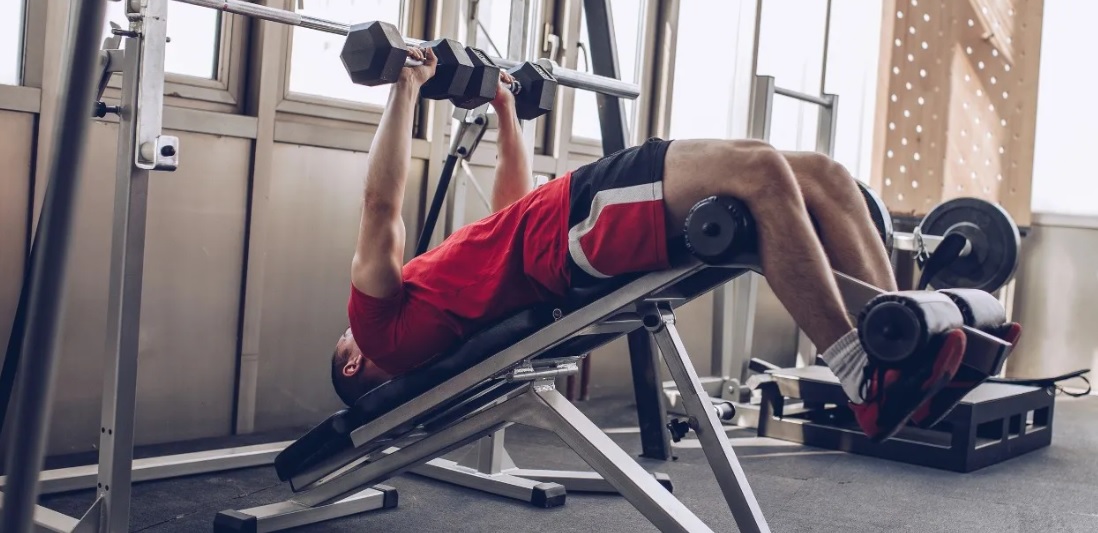
- Lowering the bench to a steeper descent emphasizes the activation of the lower chest muscles. This modification might be very useful if you want to build your lower chest more specifically.
- Arching your back slightly during the decline bench press is another method that might improve lower chest engagement. When you arch your back, you change the angle of your chest about the bench. This shift in stance puts a greater strain on the lower chest fibers, ensuring that you get the most out of each repetition. To reduce the danger of damage, it is critical to maintain appropriate form and prevent excessive arching.
- Understanding and manipulating exercise angles is an important skill to have in your chest workout arsenal. It enables you to carefully modify your workouts to target the lower chest as needed. By intelligently altering the decline angle or introducing a minor back arch during decline bench workouts
Exploring Exercise Variations for Lower Chest Muscles
- Variety is the key to making steady progress on your fitness quest. Sticking to the same activities repeatedly might lead to plateaus and impede your overall improvements.
- As a result, it’s critical to experiment with various workout routines that test your chest muscles in unique and effective ways.
- Dips are a prominent alternative to consider. Dips, when done correctly, maybe a great way to target the lower chest. It is crucial to realize, however, that not all dips are made equal.
- While the classic straight-up-and-down dip action is excellent for overall chest and triceps development, it may not stimulate the lower chest effectively. Variations in your dip technique can be used to more intensely target the lower chest.
- Another successful dip variant is to incorporate a back-and-forth rocking motion throughout the workout. By varying the angle of resistance throughout the dip, this modest rocking exercise stimulates the lower chest muscles.
- Including these exercise variants in your lower chest training routine provides two important goals. To begin with, it prevents staleness and, secondly, it guarantees that you continue to test your chest muscles.
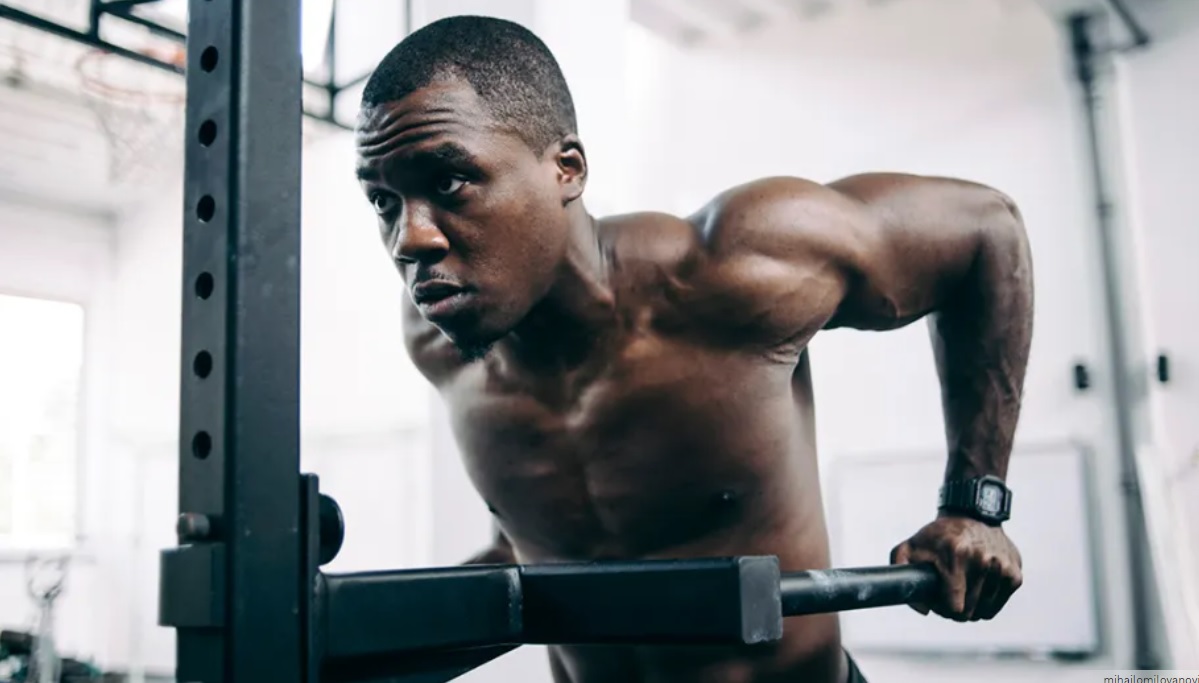
Partial Reps and Lower Pecs
- Training with partial repetitions or within a certain range of motion can be game changers for lower chest growth.
- Training at the full length of the muscle can result in enhanced hypertrophy and strength increases.
- Furthermore, including partial reps in your lower chest workouts will assist you in overcoming sticking spots and lowering your chance of injury during the most susceptible sections of the lift.
Do Dumbbell Flyes Help?
- Dumbbell flyes are an excellent workout for chest development, but there is one important skill to remember: supination.
- When doing dumbbell flyes, be careful to supinate your wrists (rotate your palms upward) while lifting the weights. This minor modification improves the exercise’s efficacy, especially when targeting the lower chest.
- Supinating your wrists during dumbbell flyes helps you to keep tension on your lower chest throughout the action, which results in more muscular activation and development.
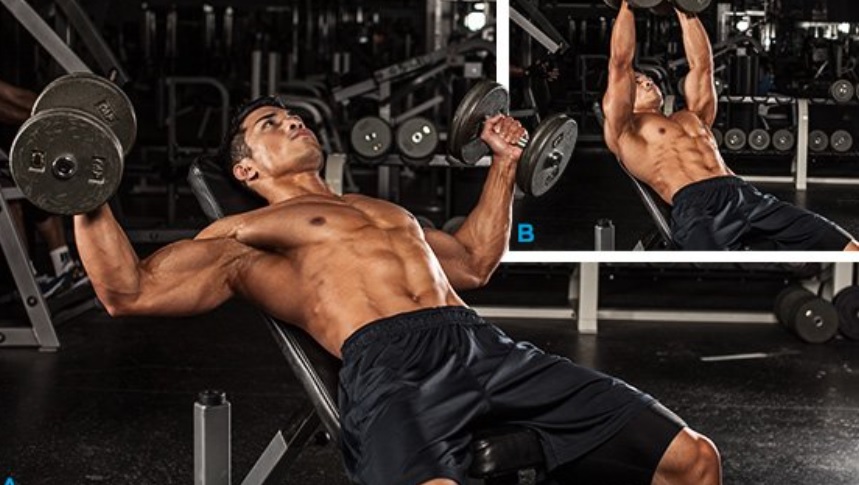
Cable Fly Workouts for Better Impact
- Cable fly workouts are an excellent way to efficiently isolate and target the lower chest. However, the angle at which the wires are installed is critical for the best outcomes.
- Set the wires high and follow the natural path of your pectoral muscles to maximize lower chest involvement. This position guarantees that you’re contracting down on the lower chest fibers where you want to see growth.
- The variety of cable fly workouts is what makes them so appealing. You may fine-tune your exercises to isolate and activate the lower chest with precision by modifying the cable angles and your body placement.
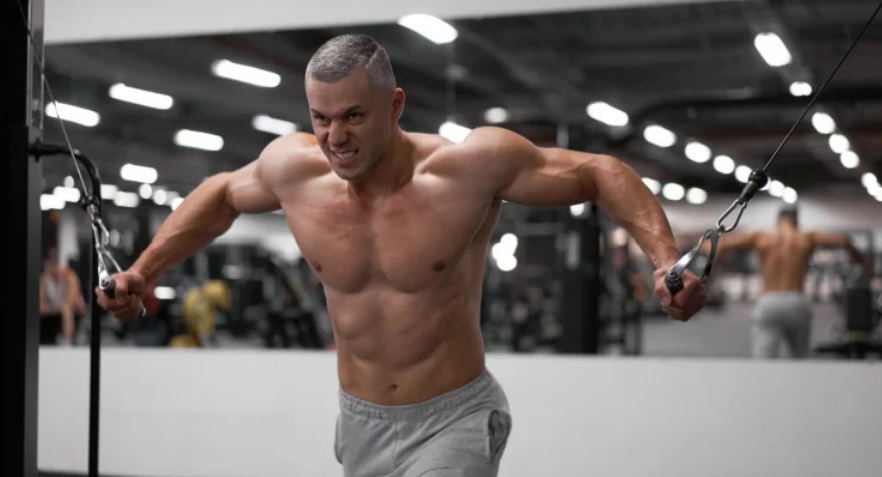
Frequently Asked Questions (FAQs):
What workouts target the lower chest muscles specifically?
Lower chest muscle exercises include a decline bench press, decline dumbbell press, and chest dips. These exercises target the bottom region of the pectoral muscles.
How can I isolate the lower chest effectively throughout my workout?
You may isolate the lower chest by adjusting the angle of your bench. Exercise on a decline bench or with the bench adjusted to a little decline. You may also employ workouts such as cable crossovers to improve lower chest isolation.
How frequently should I work out my lower chest for the best results?
Working out your lower chest muscles 1-2 times per week as part of your entire chest program is advised for the best results. Allow ample time between workouts for muscular rehabilitation.
What is the significance of including lower chest workouts in my fitness routine?
Lower chest workouts are beneficial for developing a balanced and well-developed chest. Neglecting the lower chest can result in an unbalanced appearance as well as a reduction in total chest strength.
Is there anything to avoid when working out the lower chest?
Using bad form, lifting too heavy with inadequate technique, and ignoring other portions of the chest. Use appropriate technique, keep your weight under control, and better lower chest muscle development.









